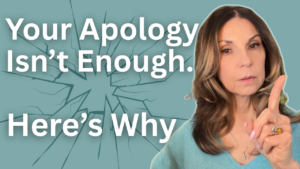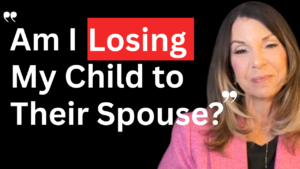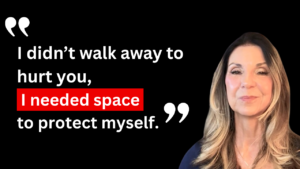Families are meant to be safe havens, yet many people navigate complex dynamics that fracture those foundations. One common and deeply painful scenario is when an in-law—be it a mother-in-law, father-in-law, sister-in-law, or another extended family member—causes a rift that divides the family. These situations can lead to estrangement, emotional distress, and even long-term psychological impacts.
If you’re facing this challenge, you’re not alone—and there are constructive ways to respond. This article explores the impact of toxic in-law dynamics and offers research-backed strategies for healing and protecting your family.
Understanding the Impact of a Toxic In-Law
When a single family member, such as an in-law, disrupts the family dynamic, the fallout can be profound. According to a study by Dr. Karl Pillemer at Cornell University, around 27% of Americans are estranged from a family member. In-law relationships are often a contributing factor (Pillemer, 2015). These rifts are often caused by:
- Control issues
- Jealousy or competition
- Cultural or value clashes
- Undermining behavior
- Manipulation or triangulation (turning people against each other)
A toxic in-law can cause long-lasting divisions by spreading rumors, creating drama, or manipulating their child or spouse into isolating from the rest of the family.
Step 1: Identify the Dynamics at Play
Ask yourself:
- Is this person consistently disrespecting boundaries?
- Do they gossip or stir up conflict?
- Are they isolating your partner or child from you or others in your family?
Understanding these behaviors through the lens of narcissistic family systems or emotional enmeshment can be helpful. Clinical psychologist Dr. Ramani Durvasula explains that toxic family members often use guilt and control to maintain power within the family structure (Durvasula, 2019).
Step 2: Set Boundaries—And Enforce Them
Setting boundaries is essential. According to licensed therapist Nedra Glover Tawwab, “Boundaries are the distance at which I can love you and me simultaneously” (Tawwab, 2021). In practice, this means:
- Clearly stating what behaviors are not acceptable
- Limiting communication if needed
- Refusing to engage in gossip or manipulation
Boundary-setting is not a one-time conversation; it requires consistency and follow-through.
Step 3: Speak with Your Partner or Direct Family Member
One of the most painful aspects of this experience is when your spouse or sibling sides with the toxic in-law. Approach them calmly and share your perspective without accusations. Use “I” statements, such as:
- “I feel uncomfortable when your sister criticizes my parenting in front of others.”
- “I want us to have a peaceful relationship, but I need your support when your mother is dismissive.”
Emotional loyalty often runs deep, so expect defensiveness—but persistence, empathy, and clarity can go a long way.
Step 4: Seek Family or Individual Therapy
Professional help is often necessary when dealing with deeply rooted family conflict. Family systems therapy can be effective in helping members see how patterns are repeated, and roles are assigned (Bowen, 1978). A neutral third party can help people express themselves and move toward resolution—or at least mutual understanding.
But what if the person at the center of the conflict doesn’t want to participate? What if reconciliation isn’t even on the table?
That’s such a powerful and painful place to be—many people in estranged relationships wrestle with it. When someone isn’t interested in reconciling, the goal of therapy shifts; it’s no longer about “fixing” the relationship. Instead, it becomes about helping you (or them) process the experience, make sense of what happened, and grow emotionally from it.
You might even say:
“I know reconciliation isn’t something you’re looking for, and I completely respect that. Therapy isn’t about forcing a relationship to work—it’s about having space to explore what you’re carrying and finding ways to move forward that feel healthy and true to you.”
Taking reconciliation off the table can make therapy feel safer. It removes the pressure and allows one to focus entirely on healing—grieving, releasing guilt, and finding peace.
Step 5: Accept What You Cannot Control
Sometimes, despite your best efforts, reconciliation may not be possible. In these cases, you face the painful decision of distancing yourself from part of your family. This is where radical acceptance, a concept from Dialectical Behavior Therapy (DBT), can be healing (Linehan, 1993). It means accepting reality as it is, without resistance, and making choices that protect your peace.
You may need to grieve the loss of a family you hoped for while building a healthier, more intentional family environment moving forward.
Step 6: Build a Chosen Family
When a toxic in-law breaks apart your family, it’s easy to feel isolated and alone. But you can rebuild your circle with people who support and uplift you. Whether it’s close friends, mentors, or spiritual communities, a chosen family can offer the validation, love, and security that may be missing from biological ties.
Final Thoughts
Being torn apart by the actions of a toxic in-law is one of the most painful forms of betrayal a family can experience. But healing is possible—with boundaries, support, and a clear understanding of one’s own worth. You are not responsible for another’s behavior but for how you protect your peace and respond.
If you’re in this situation, consider connecting with a therapist, journaling your experiences, or joining a support group. Family may be complicated, but your well-being is non-negotiable.
Continue the Conversation
If this blog post gave you insight or comfort, I strongly encourage you to read next:
When Your Adult Child Chooses Their Spouse Over You—What It Means
It continues this conversation with a deeper look into loyalty conflicts and what adult children are experiencing.
If you found this helpful, please subscribe to the blog or newsletter. It helps me reach more families navigating the pain of disconnection—just like you.









